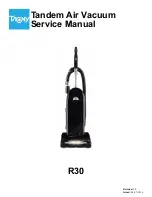
16
PI-198
December 2020
Section 5: Operation
5.0 OPERATING J-FORCE
As per the WJTA-IMCA Recommended Practices, all operators shall
follow the OSHA regulations for personal protective equipment. (OSHA
guidelines for Personal Protective Equipment are available in document
number 3151-12R 2004, which can be obtained from www.osha.gov.)
All operators shall be issued suitable head protection, eye protection,
hearing protection, body protection, hand and foot protection and respira-
tory protection (if needed). For detailed specifications on all protections
required, refer to the WJTA-IMCA ‘Recommended Practices for the Use of
High Pressure Waterjetting Equipment’ Section 6, Protective Equipment
For Personnel.
The 3” J-Force can be used for minimum service tem-
perature of -20°C (-4°F) and a maximum service temperature of 115°C
(240°F). Use at lower or higher than recommended temperatures may
result in premature o-ring seal failure.
5.1 Start by slowly increasing pressure to 500 psi and check the entire
system, including all connections, for leaks. Increase pressure in incre-
ments, pausing at each to inspect system for leaks, proper rotation of
tool, temperature, and other operational anomalies. If any problems are
discovered, lower pressure back to zero and turn off source of power
before making any adjustments.
5.2 During operation, it is normal for water to leak out of the front of
the head from around the front nozzle (or front plug). This leak-by water
comes from the water-bearing that the tool operates on.
5.3 When removing the JF3X22 nozzle with the 9/16” Type M male hose
connection (PN 67860) from the hose, the Type M Adapter may unscrew
from the inlet nut (PN 67102) and stick in the hose end. The Type M
Adapter (PN 67101) has a 5/32” internal hex cutout that allows an allen
wrench or hex key to be used to remove the adapter from the hose end.
Using a wrench on the external threads of the adapter will damage the
threads.
















































